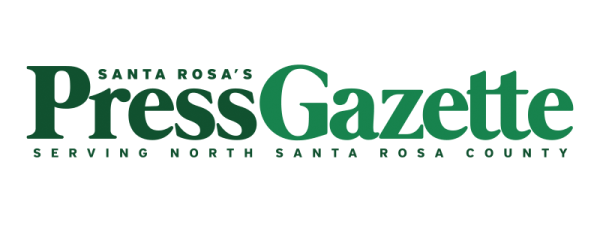Should counties rely on the latest NOAA rainfall data?
“The 1979 archived rainfall data uses the same rainfall data set for the entire Panhandle Zone 1, rather than site specific rainfall data that NOAA uses, by interpolating between the closest rainfall gauges,” Curb said.
At one meeting, a commissioner told Curb he needed to stop talking about it. Yet, public forum is a First Amendment right for the public to speak. And at Monday’s commission committee meeting he addressed the remark saying, “Brother, the First Amendment says I can talk about anything I want up here.” And he did – to no one’s surprise, he spoke on using the most recent rainfall data. When someone speaks that often about something of importance, we want to look at it.
In 2022, the Florida Statutes (Ch. 339.157.2(a)) directed the Florida State Highway System to use the most up-to-date rainfall data available from the National Oceanic and Atmospheric Administration. In response, in 2024, the Florida Department of Transportation archived the 1979 rainfall data and marked it as “Not for use in design.”
This is the rainfall data Santa Rosa County currently uses – “not for use in design.”
Curb specifically speaks about NOAA Atlas 14, which is the most current version. NOAA Atlas 15 will be out in 2026. NOAA Atlas is the federal standard for precipitation frequency and intensity estimation. The updated rainfall data can help communities within Santa Rosa County better prepare for and mitigate a severe weather event. It also will allow counties to update their design standards for stormwater management, infrastructure and other critical systems.
We spoke to county engineer, Rebecca Jones, to hear the reason why Santa Rosa County seems uninterested. As it turns out, they aren’t uninterested; they believe NOAA Atlas 14 is as accurate (or not) as their 1979 data. The NOAA data is from stations in Jay and Pensacola, which is not representative of the county as a whole. Reportedly, the NOAA Atlas 15 will use Doppler radar to provide real-time rainfall data. That is where real accuracy will happen.
To date, Jones said there have only been two stormwater ponds that have failed – one was during Hurricane Sally and the other one had pipes which were incorrectly installed. Ponds are not the problem Jones said.
“Collecting stormwater and getting it to a pond is our biggest problem. How do we convey the stormwater and get it to where it is going?” Jones said.
“I see this board (of commissioners) looking to the future and trying to do the work to solve these problems,” she added.
Meanwhile, Jones said the county has done studies and identified hot spots where flooding needs to be addressed. “When we have the funding in place, we can design drainage systems in those locations to alleviate the stormwater.”
A case for up-to-date information
- Infrastructure planning and maintenance
Rainfall data is critical for designing and maintaining infrastructure such as stormwater systems, culverts and roads. Up-to-date data helps engineers assess whether existing systems can handle current precipitation levels or if upgrades are needed. This is especially important in regions experiencing shifts in climate patterns, where historical averages may no longer reflect reality.
- Agricultural and environmental management
Farmers and environmental agencies benefit from precise rainfall data to manage irrigation, predict crop yields and monitor watershed health. Counties that rely on agriculture as an economic driver can use NOAA’s data to support local farmers and ensure sustainable land use practices.
- Enhanced emergency response
One of the most compelling reasons for counties to use NOAA’s latest rainfall data is its role in disaster preparedness and response. Flash floods, hurricanes, and severe storms can develop rapidly, and having access to real-time precipitation data allows emergency managers to make informed decisions. Evacuation orders, road closures, and resource deployment can be executed more effectively when based on accurate rainfall measurements.
Are there challenges?
- Data Interpretation Challenges: NOAA provides valuable rainfall data, but counties may lack the expertise to interpret and integrate it effectively, risking poor decisions.
- Cost and Resource Limitations: Smaller counties, like Santa Rosa, may struggle with the financial and technical demands of accessing and using NOAA data, especially when benefits aren’t immediately clear.
- Balanced approach recommended: Counties should tailor their use of NOAA data based on risk levels and capabilities. Combining NOAA data with local insights and historical trends is often more effective.
We recognize the challenges; however, we believe the benefits outweigh them – and we think the county does too. We have so much work to do in this county to build and strengthen our flood prevention measures. The county can wait for NOAA Atlas 15 to come out – but we must update our rainfall data. Commissioners, we are asking you to please consider archiving the already archived 1979 rainfall data and updating it to reflect more recent numbers.





